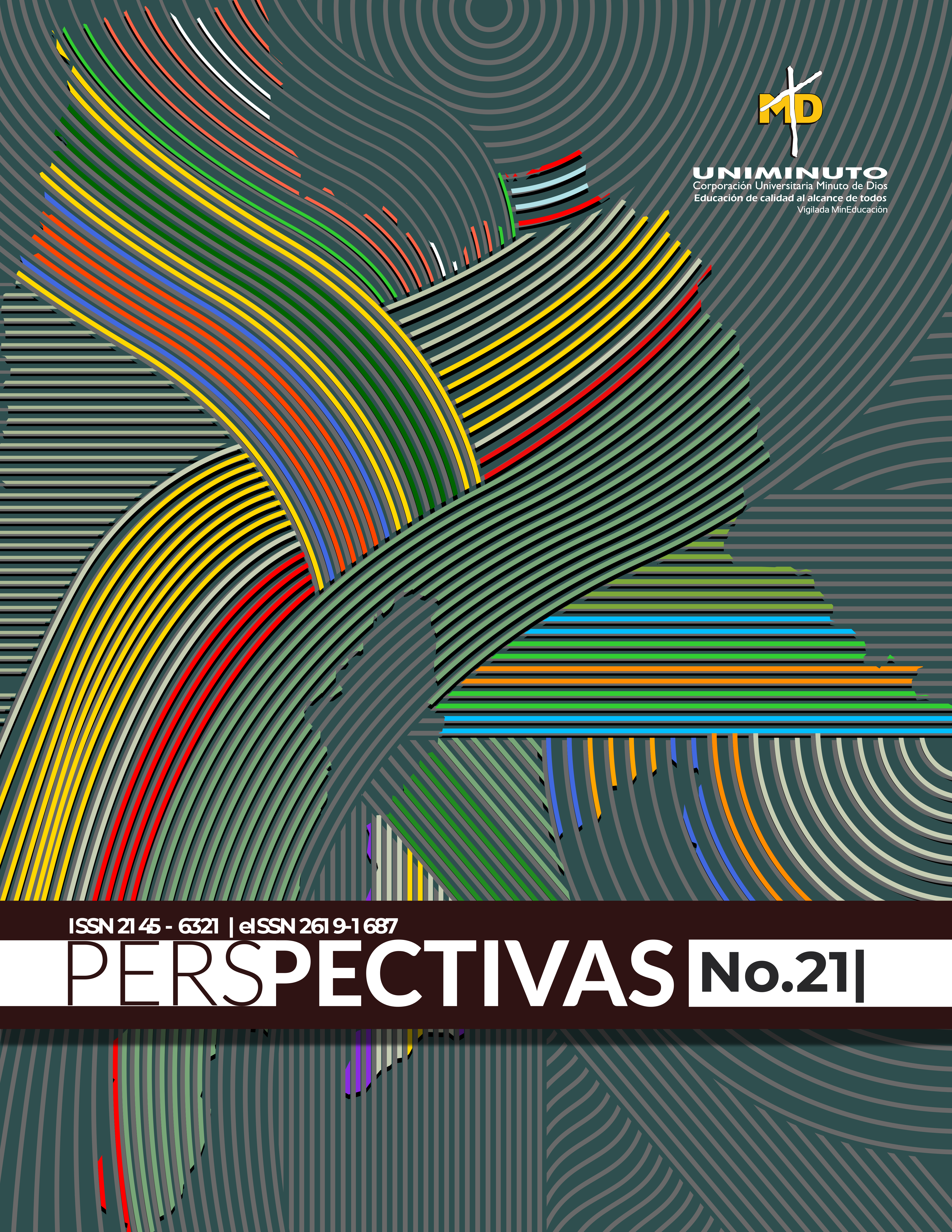Sexting: una práctica influenciada por el género en jóvenes universitarios de la ciudad de Medellín
Contenido principal del artículo
Resumen
Esta investigación formativa tuvo como objetivo comprender las percepciones acerca de las prácticas del sexting que tienen hombres y mujeres entre 18 y 25 años de edad, de la Universidad Católica Luis Amigó de Medellín. Para ello se realizó una investigación cualitativa de corte fenomenológico, como instrumento de recolección de información se aplicó una entrevista a profundidad, que constaba de 18 preguntas direccionadas a indagar la concepción del sexting, que género realiza mayormente esta práctica y la incidencia de la sociedad patriarcal en ella. La misma fue aplicada a cuatro estudiantes universitarios y se sistematizó en el software Atlas. Ti, lo cual permitió la triangulación de la información. Se identificó que el sexting es una práctica común entre los universitarios; en cuanto al género, las mujeres realizan más envíos, generalmente, a solicitud de sus compañeros permanentes u ocasionales, sin embargo, también se reconoce que se establece mayor presión a la mujer para su realización, asimismo, mayor censura y vulnerabilidad en su práctica, debido en buena medida al código patriarcal establecido históricamente
Detalles del artículo
Número
Sección

Esta obra está bajo una licencia internacional Creative Commons Atribución 4.0.
Cómo citar
Referencias
Agustina, J. y Gómez-Durán, E. (2016). Factores de riesgo asociados al sexting como umbral de diversas formas de victimización. Estudio de factores correlacionados con el sexting en una muestra universitaria. IDP. Revista de Internet, Derecho y Política, (22), 21-47. https://www.redalyc.org/pdf/788/78846481004.pdf
Alonso-Ruido, P., Rodríguez-Castro, Y., Pérez-André, C. y Magalhães, M. (2015). Estudio cualitativo en un grupo de estudiantes ourensanos/as sobre el fenómeno del Sexting. Revista de estudios e investigación en psicología y educación, Extr.(13), A13-059. https://doi.org/10.17979/reipe.2015.0.13.319
Alonso-Ruido, P. (2017). Evaluación del fenómeno del sexting y de los riesgos emergentes de la red en adolescentes de la provincia de Ourense. [Tesis doctoral, Universidad de Vigo]. Repositorio Institucional de la Universidad de Vigo. http://hdl.handle.net/11093/786
Arias, V. (2018). La mujer y el sexting: el cuerpo y la mirada en las nuevas prácticas de exhibición sexual. Question, 1(59), e061-e061. https://doi.org/10.24215/16696581e061
Donoso-Vázquez, T., Rubio, M. y Vilá, R. (2016). Violencias patriarcales en los entornos virtuales. Un estudio con adolescentes. Revista Espaço do Currículo, 9(1), 7-17. https://www.researchgate.net/profile/Trinidad_DonosoVazquez/publication/265291710_Violencias_de_genero_20_Dimensiones_e_indicadores/links/5a54d6354585152af77fd2aa/Violencias-de-genero-20-Dimensiones-e-indicadores.pdf
Drouin, M., Vogel, K., Surbey, A. y Stills, J. (2013). Let’s talk about sexting, baby: Computer-mediated sexual behaviors among young adults. Computers in Human Behavior, 29(5), A25-A30. https://doi.org/10.1016/j.chb.2012.12.030
Echeburúa, E. (2013). Atrapados en las redes sociales. Critica, 985, 30-33. https://dialnet.unirioja.es/servlet/articulo?codigo=4264545
Ferguson, C. (2011). Sexting behaviors among young Hispanic women: Incidence and association with other high-risk sexual behaviors. Psychiatric Quarterly, 82, 239–243. https://doi.org/10.1007/s11126-010-9165-8
Fraile, G., y González, P. (2018). Sexting entre adolescentes: una práctica en aumento. Evid Pediatr, 14(25). https://evidenciasenpediatria.es/files/41-13360-RUTA/AVC_25_Sexting.pdf
Galeano, M. (2004). Diseño de proyectos en la investigación cualitativa. Teoría y praxis investigativa, 2(2), 78-79. https://dialnet.unirioja.es/descarga/articulo/3063194.pdf
Mechó, T. (2017). Posibles nuevas formas de violencia de género. (Trabajo final de grado, Universitat Jaume I). http://repositori.uji.es/xmlui/bitstream/handle/10234/168965/TFG_2017_MechoPucholTeresa.pdf?sequence=1&isAllowed=y
Mejía-Soto, G. (2014). Sexting: una modalidad cada vez más extendida de violencia sexual entre jóvenes. Perinatología y reproducción humana, 28(4), 217-221. http://www.scielo.org.mx/scielo.php?script=sci_arttext&pid=S0187-53372014000400007
Papalia, D., Wendkos, S. y Duskin, R. (2009). Desarrollo humano. McGraw-Hill. http://hdl.handle.net/10637/2315
Pérez, M., del Rey, R., Walrave, M. y Vandebosch, H. (2020). Sexting en adolescentes: prevalencia y comportamientos. Comunicar: Revista científica iberoamericana de comunicación y educación, (64), 9-18. https://dialnet.unirioja.es/servlet/articulo?codigo=7486695
Quesada, S., Fernández-González, L. y Calvete, E. (2018). El sexteo (sexting) en la adolescencia: frecuencia y asociación con la victimización de ciberacoso y violencia en el noviazgo. Behavioral psychology/psicología conductual, 26(2), 225-242. https://www.behavioralpsycho.com/wp-content/uploads/2018/09/01_Quesada_26-2.pdf
Soriano, N. (2019). Difusión ilícita del sexting y violencia de género. Tratamiento penal y procesal en España. Revista Electrónica de Estudios Penales y de la Seguridad: REEPS, (5),7, 1-21. https://www.ejc-reeps.com/SORIANO.pdf
Vaca, P. (2017). La indemnización por daño moral a mujeres generado por sexting (Tesis de grado, Universidad de las Américas). http://dspace.udla.edu.ec/bitstream/33000/7000/1/UDLA-EC-TAB-2017-06.pdf
Varguillas C. y Ribot de Flores, S. (2007). Implicaciones conceptuales y metodológicas en la aplicación de la entrevista en profundidad. Laurus, 13(23), 249-262. https://www.redalyc.org/pdf/761/76102313.pdf
Villanueva-Blasco, V. y Serrano-Bernal, S. (2019). Patrón de uso de internet y control parental de redes sociales como predictor de sexting en adolescentes: una perspectiva de género. Revista de Psicología y Educación, 14(1), 16-26. https://doi.org/10.23923/rpye2019.01.168

